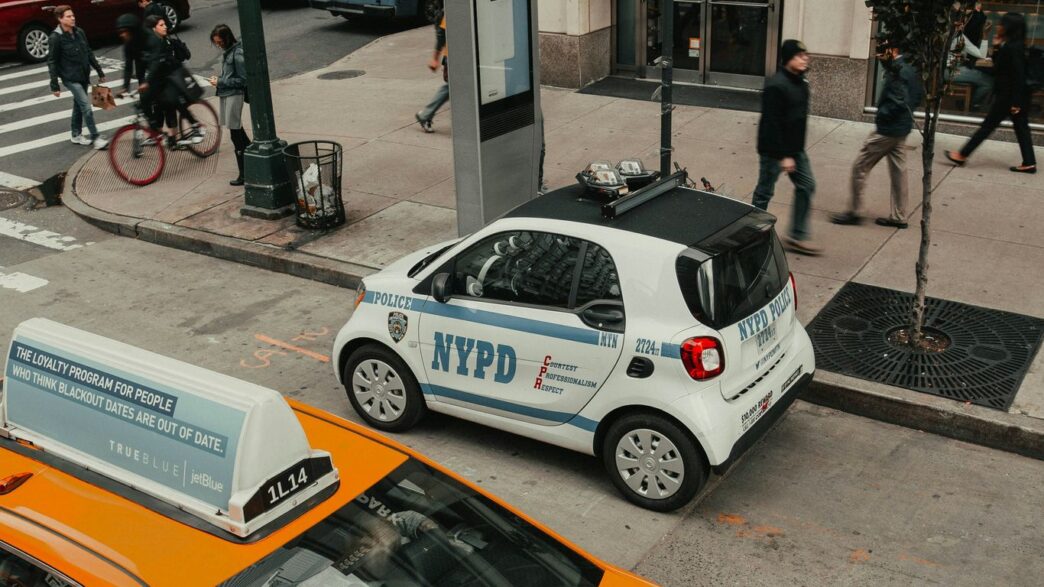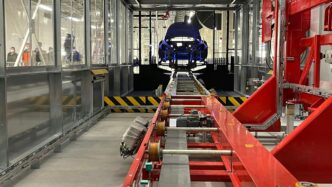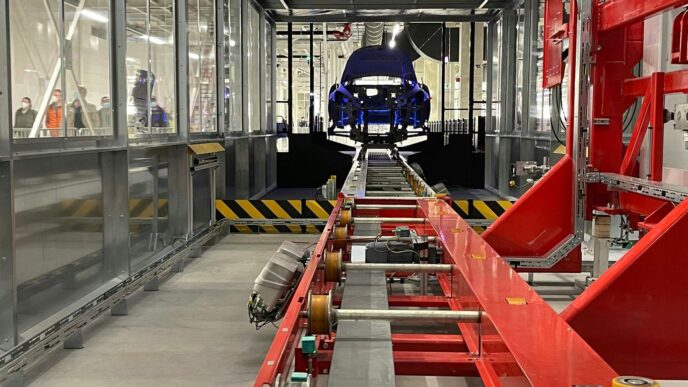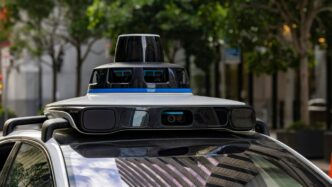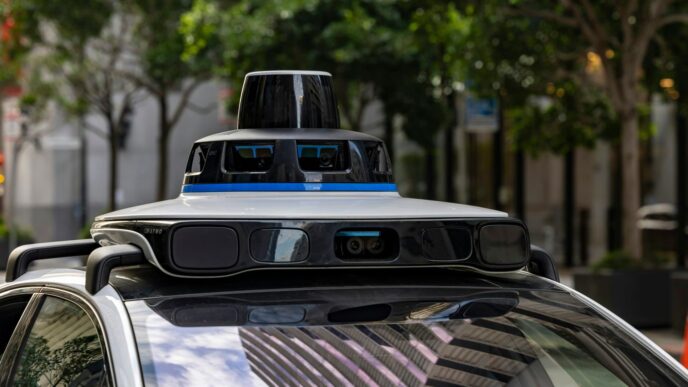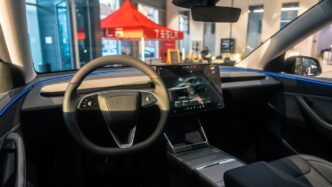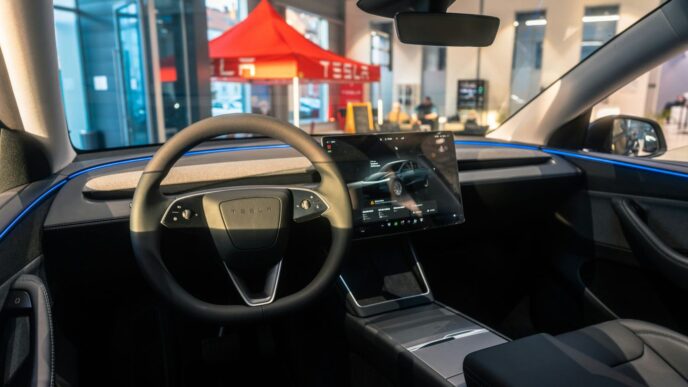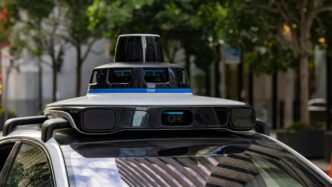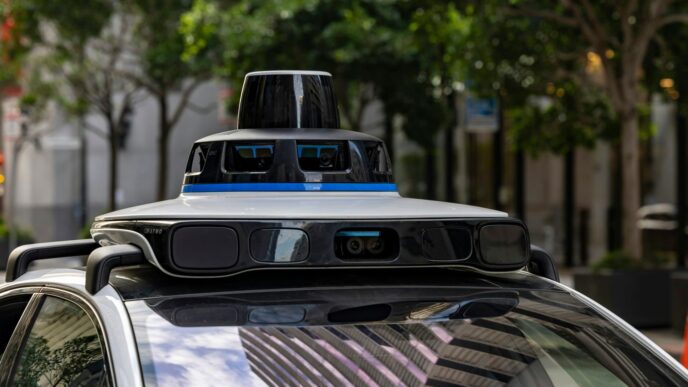Uber and May Mobility Forge Robotaxi Partnership
Expanding Autonomous Services Through Collaboration
So, Uber is teaming up with May Mobility, and it’s a pretty big deal for the future of getting around. Basically, Uber wants to put more self-driving cars on its app, and May Mobility has the tech to do it. This partnership means May Mobility’s autonomous vehicles will start showing up on Uber’s platform. It’s all about making autonomous rides more available to more people, which is kind of exciting.
Integrating May Mobility’s Technology onto Uber’s Platform
This isn’t just a quick handshake; it’s a plan to actually get May Mobility’s cars working with Uber’s system. Think of it like plugging a new device into your computer – it needs to work together smoothly. Uber has been bringing on different companies to add self-driving options, and May Mobility is the latest addition to that lineup. They’re aiming to make it so when you book a ride through Uber, you might get a car that drives itself, with May Mobility’s tech inside.
Multi-Year Agreement to Launch Robotaxis
This isn’t a short-term thing. Uber and May Mobility have signed a deal that’s going to last for a while. The first place you’ll see this in action is Arlington, Texas. They’re planning to start with safety operators in the car, and then eventually move to fully driverless rides. It’s a phased approach, which makes sense when you’re dealing with new technology like this. The goal is to get these robotaxis out there and running reliably.
Key Markets for Robotaxi Expansion

Initial Launch in Arlington, Texas
So, Uber and May Mobility are kicking things off in Arlington, Texas. This is where you’ll first see their robotaxis hitting the streets as part of this new partnership. It’s a pretty smart move to start in a place that’s already seeing some autonomous vehicle action. They’re not just dropping cars and hoping for the best, though. This is a multi-year deal, so expect to see this evolve over time.
Future Expansion to Additional U.S. Markets
After Arlington, the plan is to spread out to other cities across the U.S. They haven’t named all the specific spots yet, but the goal is to make these self-driving rides available in more places. Think of it as a gradual rollout, testing the waters and learning as they go before going big. It’s all about building up their presence and getting more people comfortable with the idea of hailing a robotaxi.
Global Ambitions for Autonomous Ride-Hailing
While the U.S. is the starting point, Uber and May Mobility have their eyes on the world. This partnership isn’t just about one country. They’re looking at this as a way to eventually offer autonomous ride-hailing services in other parts of the globe. It’s a big vision, and it shows how serious they are about making robotaxis a common sight everywhere, not just in a few select cities.
May Mobility’s Autonomous Vehicle Strategy

Transitioning from Shuttles to Robotaxis
May Mobility has been working with self-driving shuttles for a while now, mostly in smaller, controlled areas like college campuses or business parks. Think of them as automated minibuses on fixed routes. But this partnership with Uber is a big step up. It’s about moving from those limited shuttle services to full-blown robotaxis that can pick you up and drop you off anywhere within a service area, just like you’d expect from a regular ride-hailing service. This shift signifies a move towards broader, more flexible autonomous transportation. It’s not just about getting people around a specific site anymore; it’s about integrating into the everyday commute and travel plans of a much larger audience.
Utilizing Hybrid Toyota Sienna Autono-MaaS Vehicles
For their robotaxi fleet, May Mobility is using a specific type of vehicle: the hybrid Toyota Sienna Autono-MaaS. This isn’t just any minivan; it’s been outfitted with May Mobility’s own self-driving technology. The hybrid nature means it’s a bit more eco-friendly than a purely gas-powered car, and the Sienna platform is known for being spacious and comfortable, which is a plus for passengers. These vehicles are essentially purpose-built for autonomous ride-hailing, combining a reliable base with advanced tech.
Phased Rollout with Safety Operators
May Mobility isn’t just dropping these cars and hoping for the best. They’re rolling them out in stages. Initially, when you hail a May Mobility ride through Uber in places like Arlington, Texas, there will still be a human safety operator in the driver’s seat. This person is there to monitor the vehicle and can take over if needed. It’s a smart way to build confidence and gather real-world data in a new environment. The plan is to gradually remove these safety operators as the technology proves itself and regulatory approvals are met, eventually leading to fully driverless rides. This careful, step-by-step approach helps ensure safety while allowing the service to scale up.
Uber’s Growing Autonomous Vehicle Ecosystem
Adding May Mobility to a Diverse Partner Network
Uber isn’t putting all its self-driving eggs in one basket. They’re building a whole network of companies to bring autonomous rides to their app. May Mobility is just the latest addition to this growing list. Think of it like Uber being the central hub, connecting different tech providers to riders. This approach lets Uber test and roll out self-driving tech faster by working with various specialists.
Integrating Various Autonomous Driving Technologies
Each partner brings something a little different to the table. May Mobility, for instance, is known for its work with hybrid Toyota Siennas, adapting them for autonomous use. Uber’s goal is to integrate these different technologies smoothly into its existing app. So, when you book a ride, you might get a car from Waymo in one city and a May Mobility vehicle in another, all booked through the same Uber interface. It’s about offering choice and variety to users while standardizing the booking experience.
Accelerating the Adoption of Self-Driving Services
By partnering with companies like May Mobility, Uber is really trying to speed things up. Instead of trying to develop all the complex self-driving tech themselves, they’re teaming up with those who are already making progress. This collaboration helps get more autonomous vehicles on the road, sooner. It’s a smart way to scale up services and make self-driving rides a more common sight in more places, faster than any single company could likely manage alone.
The Future of Ride-Hailing with Robotaxis
So, what does all this mean for how we get around? It looks like robotaxis are really starting to become a thing, not just something from sci-fi movies. This partnership between Uber and May Mobility is a big step. We’re moving towards a future where hailing a ride might mean a car with no driver behind the wheel.
Enhancing Mobility Options for Consumers
Think about it: more robotaxis on the road could mean more cars available, especially during busy times. This could make it easier to get a ride when you need one, and maybe even bring down prices a bit. It’s all about giving people more choices and making transportation more accessible, especially for those who can’t drive or don’t have a car. Imagine being able to get a ride anytime, anywhere, without worrying about finding parking or dealing with traffic jams yourself.
Scaling Autonomous Fleets for Increased Availability
Getting a lot of these self-driving cars out there is the next big challenge. It’s not just about having one or two robotaxis; it’s about having enough to make a real difference. Companies are working on how to build and manage these fleets efficiently. This involves figuring out the best places to put them, how to keep them charged or fueled, and how to maintain them. It’s a complex puzzle, but the goal is to have a reliable service that’s ready when you are.
Competition and Innovation in the Robotaxi Sector
There’s a lot of buzz around robotaxis right now, and for good reason. Companies like Uber, Waymo, and others are all trying to get ahead. This competition is actually a good thing for us consumers. It pushes companies to develop better, safer, and more affordable technology. We’re seeing different approaches, from using hybrid vehicles to focusing on specific city areas. It’s going to be interesting to watch how this all plays out and which companies will lead the way in the coming years.
What’s Next for Robotaxis?
So, Uber teaming up with May Mobility is a pretty big deal. It means more self-driving cars could be hitting the roads sooner rather than later, starting in places like Arlington, Texas. This partnership isn’t just about adding more vehicles; it’s about figuring out how to make robotaxis a regular thing for everyday people. We’ll likely see more of these collaborations pop up as companies try to get ahead in the race to make autonomous rides a reality. It’s going to be interesting to watch how this all plays out over the next few years.


